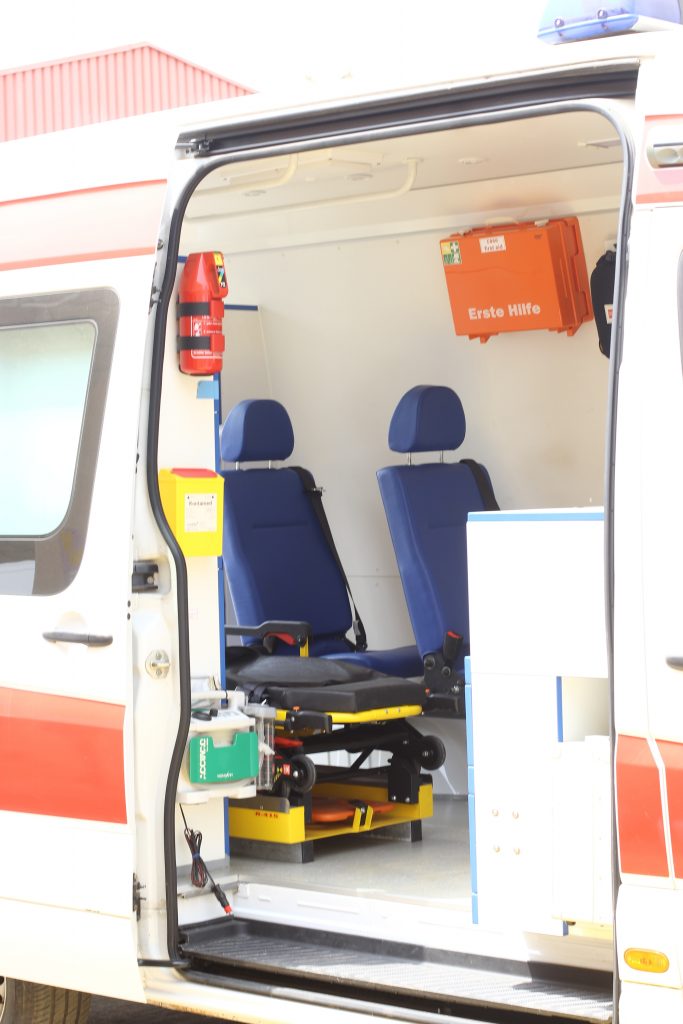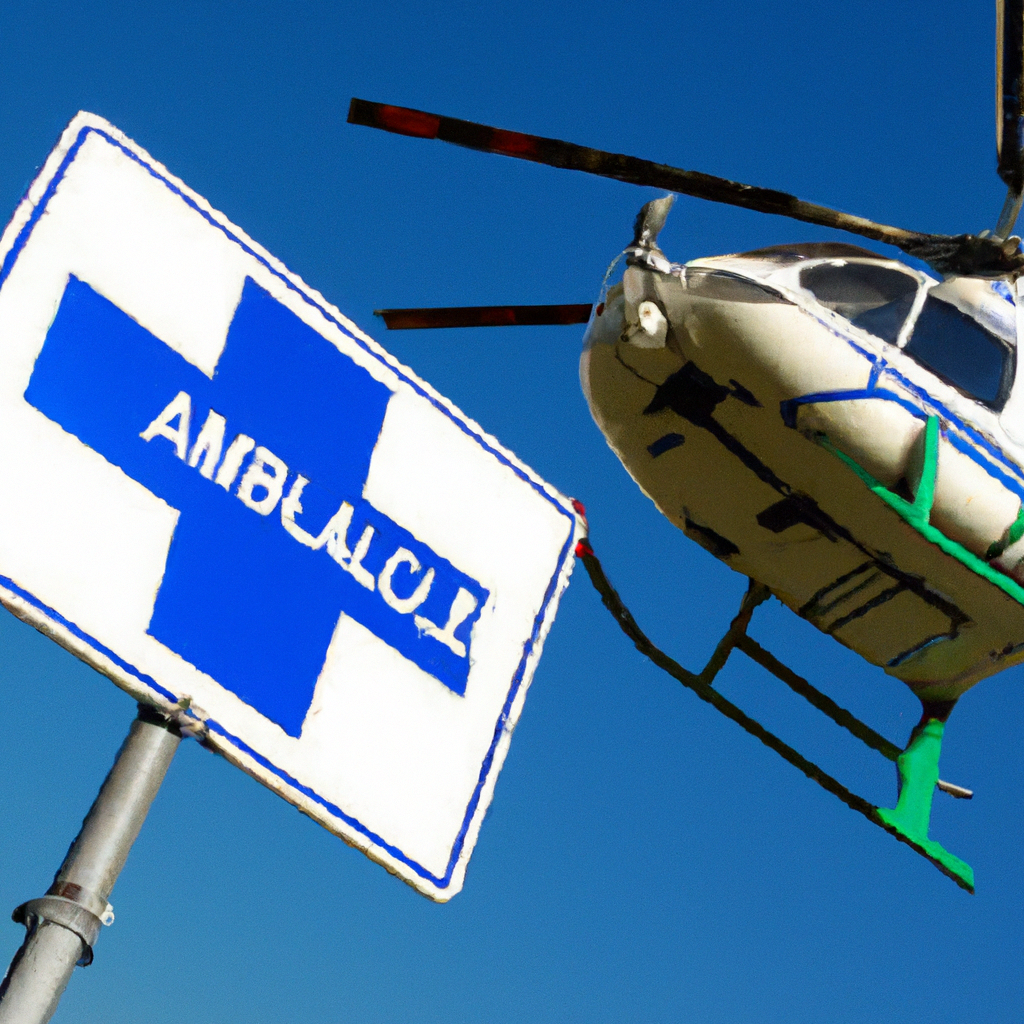So, you’re in a situation where you or a loved one needs urgent medical attention, and you’re faced with the dilemma of choosing between a ground ambulance or a helicopter ambulance. It’s a tough decision to make, and you’re probably wondering which option is better and why. Well, let me tell you, both ground ambulances and helicopter ambulances have their pros and cons, and it ultimately depends on the specific circumstances. In this article, we’ll explore the advantages and disadvantages of both options, so you can make an informed decision when the time comes.

Cost
Ground Ambulances
When it comes to cost, ground ambulances tend to be the more budget-friendly option. These vehicles are readily available at most hospitals and emergency response centers, making them a cost-effective choice for many medical emergencies. The cost of using a ground ambulance typically includes factors such as fuel, maintenance, and the salaries of the medical staff onboard.
Helicopter Ambulances
On the other hand, helicopter ambulances, also known as air ambulances, are a more expensive option. The cost of operating and maintaining a helicopter, as well as the salaries of the highly skilled medical professionals on board, can significantly drive up the price. Additionally, the need for specialized equipment and infrastructure for helicopter operations adds to the overall cost. However, it’s important to note that helicopter ambulances are often used in critical and time-sensitive situations, where the speed and accessibility they provide can be life-saving.
Availability
Ground Ambulances
Ground ambulances are widely available in most urban areas, and their accessibility is generally not an issue. Hospitals, emergency response centers, and local fire departments usually have a fleet of ground ambulances ready to respond to emergencies. This availability ensures that patients in need of immediate medical attention can be quickly transported to the nearest healthcare facility.
Helicopter Ambulances
Helicopter ambulances, on the other hand, may not be as readily available as ground ambulances. Their deployment depends on various factors such as weather conditions, proximity to a suitable landing site, and the availability of trained flight crews. While helicopter ambulances are typically stationed at designated bases to ensure quicker response times, there may still be areas where their availability is limited. It is important to consider the geographical location and the specific needs of the patient when deciding between ground and helicopter ambulances.
Speed
Ground Ambulances
Ground ambulances, although subject to traffic conditions, can be relatively fast in urban areas with well-developed road networks. With the use of sirens and emergency lights, ambulances can navigate through traffic and reach the destination quickly. However, it is worth noting that congestion or road closures due to accidents or construction projects can cause delays in reaching the desired healthcare facility.
Helicopter Ambulances
Helicopter ambulances excel in terms of speed, especially when there are obstacles on the ground that may hinder ground ambulance travel. By taking to the skies, these ambulances can bypass traffic and reach their destination more swiftly. This speed advantage is particularly crucial in situations where every minute counts, such as during severe trauma cases or when transporting patients from remote areas to specialized hospitals.
Ability to Navigate Traffic
Ground Ambulances
Ground ambulances are experienced in navigating traffic and have the advantage of being able to use sirens and emergency lights to alert other road users. Dedicated ambulance lanes or exemptions from certain traffic rules in some areas can also aid in minimizing delays. However, heavy traffic, particularly in densely populated urban areas, can still pose challenges and cause delays in reaching the destination.
Helicopter Ambulances
When it comes to navigating traffic, helicopter ambulances have a clear advantage. By flying above the congested roads, they can bypass traffic altogether and significantly reduce travel time. This ability to avoid ground obstacles makes helicopter ambulances an excellent choice for emergency situations where every second is critical.

Access to Remote Areas
Ground Ambulances
Ground ambulances can generally reach most remote areas, but their travel time may be longer compared to urban areas due to limited road infrastructure. Dirt roads, rugged terrains, and other challenges may hinder their ability to reach patients quickly. In remote locations with difficult access, ground ambulances may also require additional resources and personnel, such as off-road ambulances, to safely navigate these areas.
Helicopter Ambulances
Helicopter ambulances are particularly valuable in accessing remote areas that are not easily reachable by road. Whether it’s a mountainous region or an isolated island, helicopters can swiftly transport patients from these challenging locations to suitable healthcare facilities. This capability is essential in ensuring timely medical care for individuals living in remote or inaccessible areas.
Transporting Patients for Long Distances
Ground Ambulances
Ground ambulances are typically used for shorter distances, such as within a city or between neighboring towns. They are equipped with basic medical equipment and trained medical staff to stabilize a patient’s condition while en route to the hospital. However, for long-distance transports, ground ambulances may not be the most efficient choice, as extended travel times can be physically demanding for both the patients and the medical personnel.
Helicopter Ambulances
When it comes to long-distance transportation, helicopter ambulances are unparalleled. With their ability to cover vast distances quickly, they are ideal for transporting patients from remote areas or regions with limited medical resources to specialized hospitals. Additionally, helicopter ambulances often have advanced life support equipment and highly skilled medical professionals to provide continuous care during the flight.

Medical Equipment and Staff
Ground Ambulances
Ground ambulances are equipped with basic medical equipment and staffed with emergency medical technicians (EMTs) or paramedics. They are trained to provide immediate care to patients during transportation. Although ground ambulances may not have the same level of advanced medical equipment as their helicopter counterparts, they can handle a wide range of medical emergencies and stabilize patients effectively until they reach a healthcare facility.
Helicopter Ambulances
Helicopter ambulances have advanced medical equipment and are staffed with highly trained medical professionals. These helicopters are essentially flying intensive care units, equipped with state-of-the-art monitoring devices, ventilators, and other specialized equipment. They are often crewed by a flight nurse and a paramedic or a physician, ensuring that patients receive specialized care during the flight.
Stability and Safety
Ground Ambulances
Ground ambulances are designed for stability and safety during transportation. They undergo regular maintenance and inspections to ensure that they are in optimal working condition. Additionally, ground ambulances are equipped with features such as antilock brake systems and safety restraints to secure patients and medical staff during transit. The stable nature of ground ambulances also makes them suitable for patients who require ongoing medical treatment during transportation.
Helicopter Ambulances
Helicopter ambulances are specifically designed for stability during flight. They undergo rigorous maintenance schedules and safety checks to ensure their airworthiness. These helicopters are equipped with features such as advanced avionics systems, stability control mechanisms, and enhanced safety features like crash-resistant fuel systems and impact-absorbing seats. The emphasis on safety and stability allows for smooth and secure transport of patients in even the most challenging flight conditions.

Ability to Perform In-flight Procedures
Ground Ambulances
Ground ambulances are limited in their capacity to perform in-flight procedures due to their stationary nature. However, they are equipped with basic life support equipment and can stabilize patients during transportation. EMTs or paramedics on board can provide necessary interventions such as administering medications, performing CPR, or controlling bleeding.
Helicopter Ambulances
Helicopter ambulances are specifically designed to facilitate in-flight medical procedures. The advanced medical equipment available onboard allows for a higher level of medical care during transportation. Flight nurses, paramedics, or physicians are trained to perform a wide range of procedures, including advanced airway management, invasive procedures, and administering specialized medications.
Weather Conditions
Ground Ambulances
Ground ambulances are not significantly affected by weather conditions, except during extreme weather events such as heavy snowfall or floods, which may temporarily hinder their ability to navigate certain roads. However, with proper coordination and communication, ground ambulances can adapt and find alternative routes to reach their destination safely.
Helicopter Ambulances
Weather conditions greatly impact the operations of helicopter ambulances. Adverse weather, including strong winds, heavy rain, fog, or thunderstorms, can ground these helicopters and prevent them from taking off or landing. Flight crews closely monitor weather forecasts and consider various factors like visibility, cloud cover, and wind speed before deciding to proceed with a flight. Safety is always the top priority in helicopter ambulance operations, and flights may be delayed or canceled if the weather is deemed unsafe.
By offering a detailed overview of the pros and cons of ground ambulances and helicopter ambulances, it becomes apparent that each mode of transportation has its unique advantages and limitations. Ground ambulances are typically the more cost-effective and accessible option, while helicopter ambulances excel in terms of speed, access to remote areas, and the ability to transport patients over long distances. The decision of which type of ambulance to use ultimately depends on factors such as the urgency of the situation, the patient’s condition, geographical location, and the availability of resources. Proper coordination and communication among emergency response teams can help ensure that patients receive the appropriate mode of transportation for their specific needs, maximizing the chances of a positive outcome.




